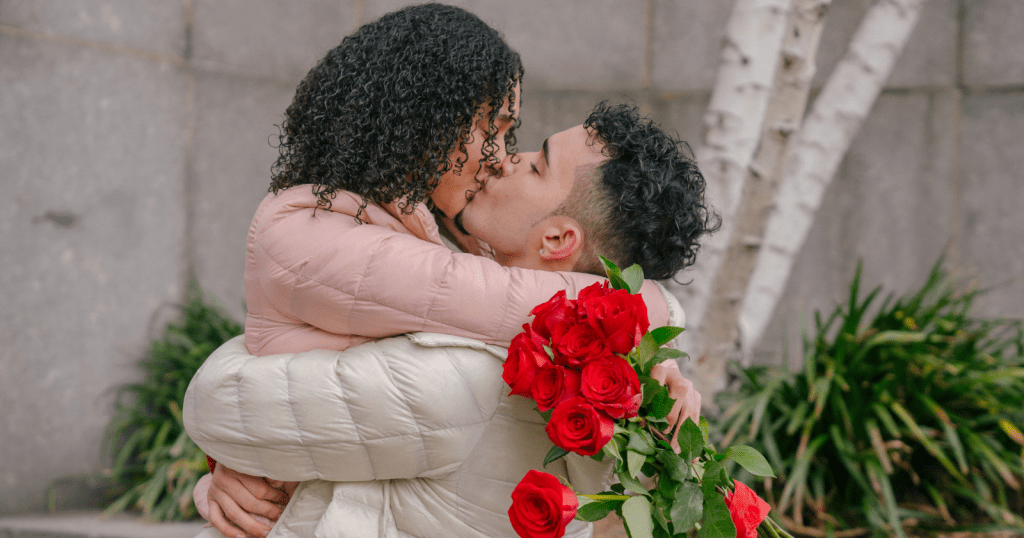The early days of a relationship are intoxicating. The rush of dopamine from a lingering touch, the thrill of discovery, the way your pulse quickens when they text—it’s easy to mistake this biochemical fireworks show for love.
But beneath the surface, there’s a quieter, more enduring force at play: the slow burn of emotional connection.
Did you know that nearly 63% of new relationships end within the first three months? This often boils down to mistaking intense initial attraction for genuine compatibility.
Psychologists distinguish lust (a craving for physical and emotional novelty) from love (a deep-rooted bond built on trust, respect, and shared values). While lust ignites fast, love takes time to simmer.
So how do you know if your spark has the fuel to last? Let’s explore seven signs your relationship is built for the long haul, blending science, storytelling, and the messy reality of modern romance.
1) You Feel Safe Being Imperfect
True love thrives in vulnerability.
Early on, my friend Clara agonized over hiding her “quirks”—her fear of thunderstorms, her obsession with 90s sitcoms, her habit of eating peanut butter straight from the jar.
But when she finally confessed these to her partner, he laughed and said, “I’ve been hiding my Star Wars LEGO collection.” That moment of mutual vulnerability shifted their dynamic.
Psychologist Brené Brown’s research underscores that shame dissolves when we share our imperfections and are met with empathy, not judgment.
Instead of hiding your love for cheesy romance novels, you feel safe sharing them. Your partner cheers your hobbies, even if they don’t share them.
If you can reveal your messy, unfiltered self—and your partner does the same—you’re likely building trust, not just attraction.
2) Conflict Feels Like a Team Sport
Do fights end with resolution, or do they leave emotional residue?
Let me share you an example: last winter, my partner and I had a blowout over holiday plans. I wanted to visit family; he wanted a quiet escape.
Instead of finger-pointing, we paused and asked, “What’s underneath this fight?” Turns out, I was anxious about missing traditions, and he was burnt out from work.
Psychologist John Gottman calls this “turning toward” conflict: viewing disagreements as clues to unmet needs, not battles to win. Couples who repair fights with curiosity (not contempt) are more likely to last.
If your arguments end with understanding, not resentment, your bond has staying power.
3) Physical Touch Evolves Beyond the Bedroom
Of course, physical chemistry is part of the equation—but its evolution tells you everything. Lust fixates on the urgency of sex; love thrives on the intimacy of everyday touch.
Neuroscience reveals that oxytocin, the “bonding hormone,” surges during non-sexual affection—holding hands, brushing hair from their face, or laughing so hard you lean into each other.
A 2019 study in Psychoneuroendocrinology found that couples who prioritize casual touch report higher relationship satisfaction.
So, when you crave their warmth during a movie night as much as in the bedroom, you’re moving beyond lust.
Consider reading The 5 Love Languages (affiliate link) by Gary Chapman to understand how you and your partner express and receive love. This can help to strengthen your emotional connection and enhance intimacy.
4) You Share a “Secret Language”
Inside jokes, nicknames, and shared glances aren’t just cute—they’re evidence of emotional attunement.
Psychologist Robert Sternberg’s Triangular Theory of Love identifies intimacy (the sense of “us against the world”) as a cornerstone of lasting relationships.
My college roommate and her husband still reference a disastrous camping trip where they got lost for hours. That story became part of their lore, a reminder of how they navigate chaos together.
Shared narratives like these build a unique emotional shorthand that lust can’t replicate.
5) You Inspire Each Other’s Growth

Do you support each other’s personal pursuits and passions? Do you maintain your own friendships and hobbies outside of the relationship?
It’s important to remember that a relationship should enhance your life, not define it. Maintaining your individuality allows you to bring new experiences and perspectives to the relationship, keeping it fresh and exciting.
You see, lust often demands performance—dressing to impress, curating a flawless persona. Love, however, encourages growth.
When my cousin started painting again after years of abandoning her hobby, her partner converted their spare room into a studio.
Psychologist Carl Rogers called this “unconditional positive regard”: loving someone for who they are and who they’re becoming.
A 2020 study in Journal of Happiness Studies found that couples who support each other’s goals experience deeper fulfillment.
You see, if your relationship fuels your ambition, not stifles it, you’re in love territory.
6) You Can Imagine a Mundane Future Together
Lust lives in the present; love daydreams about the future.
Not just grand visions of weddings or travel, but the mundane: grocery shopping on a rainy Tuesday, debating what to watch after work, or nursing each other through the flu.
Neuroscientists note that couples who discuss hypothetical futures (even jokingly) activate brain regions linked to long-term planning and commitment.
If you catch yourself thinking, “I want to annoy this person for decades,” that’s a good sign.
“Love doesn’t erase the past, but it makes the future different.”
7) You Miss Them Differently
It’s the texts you send at 2 a.m., the restless nights replaying memories of their touch, the way your heart races when you see their name light up your phone.
But love? Love’s absence feels quieter, deeper, like a homesickness for the parts of them that exist beyond the spark.
Take my colleague, for instance. When her partner traveled for a month, she didn’t just miss the excitement of their dates or the thrill of intimacy. She missed the way he hummed off-key in the shower, the way he’d burn toast every morning and laugh about it, the way he’d absentmindedly tap his pen during meetings—tiny, mundane rhythms that had become the backdrop of her life.
Psychologist Dorothy Tennov coined the term limerence to describe the obsessive, almost addictive nature of infatuation, driven by dopamine-fueled highs and a fear of rejection.
But what she found is that limerence fades—often within months—as the brain seeks stability.
Love, however, settles into a different kind of longing. It’s less “I need you now” and more “I can’t wait to tell you about my day.”
Now, if you find yourself smiling at a song they’d hate or saving a meme they’d laugh at, not out of obligation, but because their essence has become part of your inner world, you’re no longer just infatuated.
You’re building a love that lingers, even when they’re not in the room.
Conclusion: Building a Love That Lasts
Distinguishing love from lust isn’t about dismissing passion—it’s about recognizing if your connection has roots beneath the spark.
Ask yourself: Does this person feel like home, or just a thrilling detour?
Lust fades, but love expands. By nurturing these habits, you’re not just chasing a feeling—you’re building a life.
Discerning whether your new connection is destined for a long-term journey or is just a temporary spark requires careful reflection and honest communication. While intense passion can be intoxicating, true love is built on a foundation of shared values, emotional vulnerability, and mutual respect.
By paying attention to these seven signs, you can gain valuable insights into your relationship’s potential.
If the signs are there, remember that building a lasting relationship also requires continuous effort, understanding, and the willingness to navigate challenges together.
Ultimately, remember to trust your intuition and be open to the journey, no matter where it may lead.

Lila Anderson is an intimacy expert providing accessible and inclusive education on sexual health and relationships. Known for her engaging and down-to-earth approach, Lila has worked with individuals, schools, and community organizations to foster informed, open conversations. She wants to empower people with the knowledge they need to make confident, healthy decisions, and to create a world where everyone feels equipped to explore and understand their sexuality and relationships. Although she’s still in her 3rd year of practice, she has been well-loved by her friends and acquiantances for being so relatable and down to earth.





